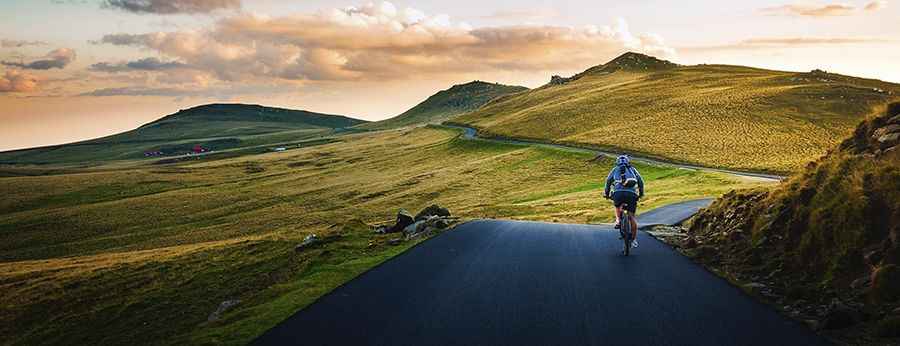The worst roads for cyclists
2018 was the worst year to be a cyclist in the US according to the New York Times. At least two cyclists died on their bikes on roads across America daily, leading to over 700 deaths at the end of the year, the highest number since 1990.

Around the world, cyclists face dangers doing what they love the most. But what are the most dangerous roads for cyclists?
Karakoram Highway (Borders Pakistan and China)
Ever cycled on a road located 15000 feet above sea level? What’s more, a road that passes across mountains where landslides, flooding and falling rocks occur? That’s a brief description of the Karakoram Highway. It stretches 13,000 kilometers from China to Pakistan. It is an important road for the two countries. But it’s not the friendliest highway to cyclists, pedestrians and even drivers. If you have to cycle on the highway, authorities recommend that you do it as a group or with the help of a tour guide. Preferably, cycle during the summer, when the weather is clear and the danger for mud slides and flooding are low. It also helps to check out maps of the road so that you can identify black spots beforehand.
Death Road (North Yungas Road in Bolivia)
For many years, the North Yungas Road in Bolivia was known as the most dangerous road in the world. It would kill over 300 people each year—mainly because their vehicles or bikes veered off into a 600m feet-long cliff. The Bolivian government has since redesigned the road to make it safer. And naturally, a lot more cyclists feel confident to ride on the road. According to the BBC, cycling on the North Yungas Road has become an extreme sport for hundreds of cyclists every year. It’s not popular globally, and so you might not find it on the cycling betting sites discussed on bestbettingsites.com. But it’s incredibly thrilling although dangerous. To provide some context, cycling on the Yungas road involves dropping 11,800 ft at speeds of up to 30mph (48km/).
Zoji La Pass (India)
The Zoji La Pass is a short 9-kilometer stretch through the Himalayan Mountains in India. It is located 11,000 feet above sea level. But that’s not the dangerous part. The road is narrow, rough and unpaved. To worsen the situation, Zoji La Pass floods often and is susceptible to landslides. For these reasons, the Indian government closes it every time there’s a snowfall or extreme winter conditions. In other words, the Zoji La Pass isn’t a safe road for cyclists. If you want to test your daredevil cycling skills, though, do it during the dry months and pack a bag full of emergency supplies.
Highway of Death (Route BR-116 in Brazil)
Brazil’s second longest road is also the country’s most dangerous. It stretches from North to South Brazil—a distance of 4,385 kilometers (2,725 miles). So, what makes this dangerous so dangerous? For starters, there are 200+ places along the road where criminals sell children for sexual exploitation. Then there are gang-controlled areas in some sections, extreme weather conditions and it’s extremely long. Against that backdrop, Brazil’s BR-116 is not the friendliest highways to cyclists, at least not at night or areas controlled by outlaws. Otherwise, it provides some incredibly panoramic views of nature. It also connects 17 cities, from North to South of Brazil.
Skippers Canyon Road (New Zealand)
The Skippers Canyon Road is yet another highway made dangerous by to its location. It was designed during the gold rush of the late 1800s. And after years of claiming people’s lives, it earned its reputation for the most dangerous road in New Zealand. Today, the Skippers Canyon is so feared that some insurance and rental car companies prohibit drivers from using it. Due to that, it’s mostly used by tourists and cyclists. And even then, accidents still happen. As you’ve guessed, the biggest problem on this road is that it’s narrow, unpaved and located too high up the mountains. A simple mistake, like riding on the edge can lead to a deadly fall.
Tianmen Winding Mountain Road (China)
Some people call it the most beautiful road in China. Others call it the highway to Heaven. But truthfully, the Tianmen Winding Mountain Road is a nightmare for drivers and cyclists. It’s an eleven-kilometer stretch consisting of 99 symbolic bends and leads to the gates of an ancient Buddhist temple. Once up there, you can climb up a walkway consisting of 999 steps before you enter the temple. For people that fear heights, there’s a cable car that lets you cruise through a zip line and into the famous temple. For extreme cyclists, the Tianmen Winding Mountain Road is a chance to tour one of China’s most beautiful roads while doing what you love the most.
James Dalton Highway (USA)
The James Dalton Highway is an infamous road mainly used by trucks in Alaska. It’s a properly built road. But it’s laden with hazards, from extremely cold temperatures to wildlife and alienation from cities. The police department in Alaska patrols the road with a helicopter twice to look for people in need of assistance. But that means there are many hours when you could be exposed to harm with no one to assist you. The biggest threat for cyclists is the cold temperatures—up to -60 degrees Celsius. Next up, is the wildlife and unpaved sections.
Commonwealth Avenue (Philippines)
Like Brazil’s BR—116, falling rocks and mudslides are not the biggest dangers for cyclists on the Commonwealth Avenue. Instead, it is the drivers, pedestrians and bikers on the road, many of whom compete to have their way without following traffic rules. Surprisingly, the Commonwealth Avenue is a pretty long road that covers 18 lanes in some sections. But with everyone acting aggressively, cyclists are advised against using it. To provide some context, 70000 people die in Quezon City. It’s mostly dangerous during the rainy season and is rarely safe.